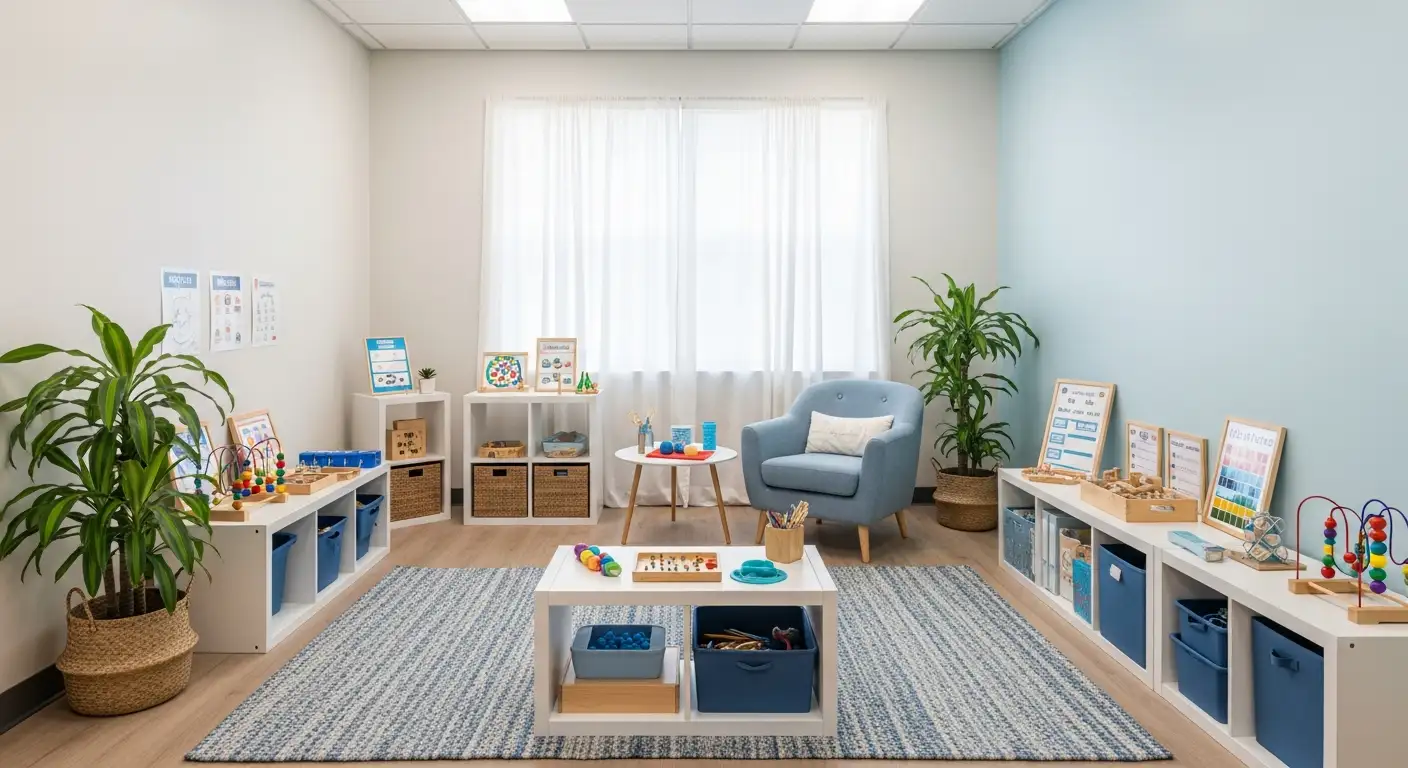Understanding the Power of ABA in Enhancing Family Connections
Applied Behavior Analysis (ABA) therapy is widely recognized as a cornerstone in supporting children with autism. Beyond its focus on behavior modification and skill development, ABA plays a vital role in fostering stronger family relationships and promoting harmony within the home. When families actively participate in treatment and integrate therapeutic strategies into daily routines, they create a cohesive environment where understanding, support, and affection flourish. This article explores how ABA therapy supports family dynamics, enhances communication, involves siblings, and ultimately builds a nurturing, harmonious family life.
The Impact of ABA Therapy on Family Relationships and Harmony

How does ABA therapy improve family relationships and promote family harmony?
ABA (Applied Behavior Analysis) therapy plays a significant role in enhancing family dynamics by actively involving parents and caregivers. When families engage in therapy sessions and support strategies at home, it ensures consistency in approach and reinforces positive behaviors, which helps build stronger bonds among family members.
Teaching children communication, social, and adaptive skills is at the core of ABA. These skills facilitate better understanding and interaction within the family, reducing frustrations caused by misunderstandings or challenging behaviors. As children become more capable of expressing their needs and emotions, family interactions become smoother and more supportive.
Positive reinforcement, a widely used technique in ABA, encourages desirable behaviors by rewarding progress. When families see tangible improvements, it fosters a sense of achievement and motivation. Moreover, practicing skills in various settings helps children generalize what they learn, making their behaviors more adaptable and reducing stress within the household.
Involving parents in the therapy process also increases trust and mutual collaboration with therapists. When parents understand and participate in intervention plans, it creates a shared sense of purpose and understanding. This teamwork enhances emotional security and respect among family members, contributing to a cohesive family environment.
Overall, ABA therapy helps create a nurturing space where families unite with common goals. Through active involvement, skill development, and reinforcement, it strengthens relationships, reduces conflicts, and promotes a harmonious and supportive home life.
Family Engagement as a Pillar of Successful ABA Therapy

What role does family involvement play in the success of ABA therapy for autism?
Family involvement is a cornerstone of effective ABA therapy for children with autism. When families actively participate, they help reinforce learned skills and promote their application beyond therapy sessions in everyday settings.
Parents and siblings who are engaged in the treatment process can consistently apply strategies at home, which accelerates the child's progress and supports the generalization of skills across various situations.
Therapists often provide training and coaching to parents, empowering them to implement behavioral strategies confidently. This collaborative approach ensures that interventions are tailored to fit the family's routines and values, fostering a supportive environment.
Moreover, family engagement enhances communication between parents, siblings, and therapists, aligning efforts towards common goals. It also provides emotional stability, motivation, and reassurance, which are vital for maintaining the child's motivation and reducing anxiety.
Ultimately, this comprehensive involvement ensures that therapy benefits are sustained long-term, benefiting the child's overall development and improving family dynamics.
Fostering Family Harmony Through Consistent ABA Strategies
Applying ABA Strategies at Home
Implementing Applied Behavior Analysis (ABA) strategies in daily life is essential for reinforcing positive behaviors and encouraging skill mastery. Parents can use techniques such as positive reinforcement—praising or rewarding desired behaviors—to motivate children. Consistency is critical; applying the same rules and routines across different settings helps children understand expectations and generalize learned skills.
Creating Structured Routines and Visual Supports
Establishing predictable routines and visual supports can considerably reduce anxiety for children with autism. Visual schedules, charts, and simple cue cards help children understand daily activities and transitions, fostering independence and reducing behavioral challenges. Incorporating consistent routines offers children a sense of stability and control, benefiting their emotional well-being.
Celebrating Small Successes
Recognizing and celebrating incremental progress boosts motivation and strengthens family bonds. Whether it's a new word, a successful routine, or improved social interaction, celebrating these milestones reinforces effort and persistence. This positive reinforcement fosters a supportive environment where children feel valued and encouraged.
Encouraging Open Communication and Teamwork
Effective communication among family members is vital. Parents should openly discuss progress, challenges, and goals related to ABA therapy. Involving siblings and other family members in activities and therapy sessions promotes understanding and empathy. Active teamwork ensures everyone is aligned in supporting the child's development and maintaining a cohesive family atmosphere.
How can parents foster family harmony through ABA therapy?
Parents play a pivotal role by applying ABA strategies consistently at home, reinforcing behaviors, and facilitating skill development. Engaging the whole family in therapy sessions, training, and daily routines helps create a unified approach. Maintaining open channels of communication about the child's progress and challenges encourages teamwork.
Creating a structured, sensory-friendly environment with routines reduces stress and anxiety. Celebrating even small successes enhances motivation and unity. Ultimately, fostering family harmony through these consistent strategies helps build a supportive environment, nurturing both the child's growth and familial relationships.
Practical Tips for Parents to Strengthen Family Bonds

What practical tips can parents implement to enhance family relationships with ABA?
Parents play a crucial role in supporting their child's development through Applied Behavior Analysis (ABA). Consistently practicing learned skills at home reinforces therapy progress and fosters a trusting relationship between parents and the child. Engaging actively in therapy sessions and applying strategies like positive reinforcement for desirable behaviors help establish a supportive environment.
Open and empathetic communication is vital. Parents should aim to listen actively, express understanding, and encourage their child to share their feelings comfortably. Transparent dialogue with therapists also ensures that everyone is aligned on goals and progress, leading to a unified approach.
Creating a structured and predictable environment supports the child's sense of security. Visual supports, such as visual schedules or timers, can reduce anxiety and clarify daily routines. Consistent routines across home and therapy settings reinforce learning and promote positive behaviors.
Education and active collaboration with therapists are beneficial. Parents attending workshops, reading reputable resources, and participating in therapy sessions equip them to better meet their child's needs. This shared understanding helps in setting realistic goals and tailoring strategies to fit family dynamics.
Celebrating small milestones and progress fosters motivation and creates positive family experiences. Recognizing effort and achievement reinforces confidence for both the child and parents.
In summary, engaging in consistent ABA practice, maintaining open communication, establishing a structured environment, collaborating with professionals, and celebrating progress are practical methods to strengthen family relationships. These strategies support not only the child's growth but also nurture a resilient, connected family unit.
Enhancing Sibling Relationships and Support Networks
How does ABA therapy impact sibling relationships and overall family support?
ABA therapy can play a vital role in strengthening sibling ties by improving social interactions and communication skills among family members. When siblings participate in therapy activities, they gain better understanding and patience, which reduces conflicts and fosters positive relationships.
Involving siblings in ABA sessions allows them to serve as role models and offer emotional support. This active participation can help siblings feel more connected and engaged in their brother or sister's developmental journey.
Creating inclusive routines and encouraging open communication are crucial. These strategies help siblings understand autism better, promote empathy, and create a supportive environment at home.
Educating all family members about autism, especially siblings, helps dispel misconceptions and reduces misunderstandings. Sharing activities during therapy and everyday routines builds a sense of teamwork.
Overall, when siblings are involved appropriately in ABA therapy, it promotes family cohesion and enhances emotional well-being. This collaborative approach supports the child's growth while strengthening family bonds.
Strategies for fostering sibling understanding and support
- Including siblings in therapy activities
- Teaching children about autism in developmentally appropriate ways
- Developing empathy through shared experiences
- Creating routines that involve all children in inclusive, supportive practices
Promoting Social Skills and Community Integration

How does ABA therapy contribute to social development and family interactions for autistic individuals?
Applied Behavior Analysis (ABA) therapy plays a crucial role in helping autistic individuals develop vital social skills. It uses structured, individualized programs that teach behaviors like requesting, turn-taking, imitation, and initiating conversations. Therapists employ techniques such as modeling, role-playing, and positive reinforcement to help children understand social cues and emotions.
By setting specific goals and regularly assessing progress, ABA therapy ensures continuous development tailored to each child's needs. Building foundational skills like communication and patience creates a stepping stone towards more complex social behaviors.
Participation in social skills groups and community activities further enhances these abilities. Such involvement encourages peer interaction, cooperation, and relationship building, which are essential for social inclusion.
In family settings, these interventions also improve daily interactions. As children become more adept at socializing, family relationships often strengthen because communication becomes clearer, and misunderstandings decrease.
Overall, ABA therapy supports autistic individuals in gaining independence in social settings, fostering better integration into community life and enhancing overall family cohesion.
| Aspect | Approach | Purpose | Example Activities |
|---|---|---|---|
| Teaching social skills | Goal-oriented ABA programs | To develop requesting, turn-taking, and imitation | Role-playing, modeling, behavioral skills training |
| Peer participation | Social groups | To promote interaction and relationship-building | Group games, shared projects |
| Family involvement | Collaborative strategies | To reinforce skills at home and in community | Family outings, joint therapy activities |
| Community integration | Supportive community activities | To foster social acceptance and independence | Community events, local clubs |
This comprehensive approach ensures that autistic individuals not only learn essential social skills but also carry them into real-world settings, leading to improved family relationships and social participation.
Cultural Considerations and Inclusive Practices in ABA

How can ABA therapy be adapted to serve families from diverse cultural backgrounds?
ABA therapy can be effectively tailored to meet the needs of families from various cultural backgrounds by being sensitive to their specific norms, values, and practices. Practitioners can incorporate cultural norms into intervention strategies, ensuring activities and goals resonate with the family's cultural context.
Using bilingual or culturally appropriate assessment tools is essential. Employing interpreters or bilingual practitioners helps bridge language gaps, making communication clearer and building trust between families and therapists.
Addressing socio-economic and cultural stressors is also a vital part of adaptation. For example, considering familial roles, traditions, and community influences ensures that strategies are relevant and respectful.
Involving families in treatment planning and training fosters a sense of ownership. When families feel their cultural values are acknowledged and incorporated, they are more engaged and committed to the therapy process.
Practitioners who engage in self-reflection and cultural analysis can reduce implicit biases, ensuring better intercultural communication and stronger relationships.
Overall, culturally adapted ABA interventions improve accessibility and effectiveness, resulting in increased family participation and harmony.
Fostering Family Harmony Through Knowledge and Practice
ABA therapy offers a comprehensive framework not only for behavioral improvement but also for strengthening familial bonds. Through active participation, consistent practice, open communication, and cultural sensitivity, families can create a nurturing environment where every member feels understood, supported, and valued. Emphasizing the importance of education, collaboration, and empathy, ABA helps families transition from managing behaviors to building relationships rooted in trust and mutual respect. As families grow more cohesive and communicative, they lay the foundation for enduring harmony, resilience, and collective well-being.
References
- Guiding Light: Understanding Autism Family Counseling
- The Role of Family in ABA Therapy: Tips for Parents
- Benefits of ABA Therapy for Children with Autism
- Delivering Home-Supported Applied Behavior Analysis Therapies to ...
- The Role of Family Therapy for Autism | Blossom ABA
- How to Support Siblings of a Child with Autism
- Autism in the Family: How to Ensure All Siblings Feel Equally Loved
- Supporting Families With Autistic Children - Psychology Today
- The Role of Caregiver Involvement in ABA Therapy










